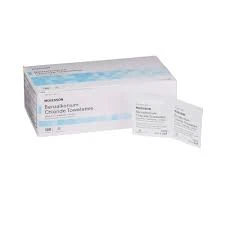poly aluminium chloride for drinking water
Poly Aluminium Chloride (PAC) for Drinking Water Treatment
Water is a vital resource for human survival, and its quality is paramount. As the world grapples with increasing population, industrialization, and urbanization, the demand for clean drinking water has surged. One effective solution that has emerged in water treatment processes is the use of Poly Aluminium Chloride (PAC). This coagulant plays a crucial role in purifying drinking water and ensuring its safety for consumption.
What is Poly Aluminium Chloride?
Poly Aluminium Chloride is a polymeric inorganic chemical compound that is widely used in water treatment applications. Structurally, it consists of aluminum hydroxide and has a basicity that allows it to form complexes with other particles in water. PAC is a versatile and effective coagulant, outperforming traditional coagulants like alum in various capacities. Its efficiency in destabilizing colloidal particles significantly contributes to the removal of suspended solids, color, and organic matter from water.
Mechanism of Action
The primary mechanism through which PAC operates is coagulation. When PAC is added to water, it interacts with negatively charged colloidal particles, neutralizing their charges. As the charges become neutral, these particles can agglomerate and form larger flocculent masses. The floes created effectively trap impurities and suspended solids, allowing them to settle down in a sedimentation tank, thus clarifying the water. The smaller and denser nature of PAC flakes enhances the sedimentation process, resulting in clearer water in a shorter time span compared to traditional coagulation processes.
Advantages of Using PAC
1. Increased Removal Efficiency PAC has been found to be more effective in removing contaminants from water compared to conventional coagulants. It achieves a higher rate of turbidity reduction and improves the overall quality of treated water.
poly aluminium chloride for drinking water

2. Lower Dosage Requirements Due to its high charge density and larger molecular size, PAC requires a lower dosage compared to alum. This results in reduced chemical costs and less waste byproduct generation during water treatment processes.
3. Wider pH Range Application PAC exhibits a high coagulation efficiency across a wide range of pH levels, making it versatile for treating various types of water sources. This characteristic enables treatment facilities to operate effectively regardless of variations in water quality.
4. Enhanced Settling Properties The floes formed from PAC treatment are heavier and settle faster than those formed by traditional coagulants. This leads to a more efficient sedimentation process, allowing for quicker filtration and improved throughput in water treatment plants.
5. Reduced Residual Aluminum One of the concerns associated with traditional coagulants is the residual aluminum content left in treated water. PAC produces lower residual levels, which is a significant advantage, especially in drinking water applications where safety standards are strict.
Applications of PAC
PAC is predominantly used in drinking water treatment plants, but its applications extend to wastewater treatment, industrial processes, and even papermaking. In the context of drinking water treatment, PAC aids in the removal of pathogens, bacteria, and viruses, contributing to the overall safety and potability of water. Research has shown that water treated with PAC meets health guidelines and regulations established by organizations such as the World Health Organization (WHO).
Conclusion
As the global demand for clean drinking water continues to rise, the role of effective coagulants like Poly Aluminium Chloride becomes increasingly important. Its unique properties offer significant advantages over traditional coagulants, making it a popular choice among water treatment facilities. By ensuring the removal of harmful substances, improving water quality, and addressing the challenge of quick sedimentation, PAC proves to be a valuable tool in the quest for safe drinking water. The continued utilization and research into PAC will undoubtedly contribute to enhanced water treatment technologies that prioritize public health and environmental sustainability. As we move toward a future where clean water is accessible to all, innovations like PAC will remain at the forefront of our efforts.
-
The Ultimate Guide to Flocculants: Transforming Water TreatmentNewsNov.01,2024
-
Improve Your Water Treatment Solutions with PolyacrylamideNewsNov.01,2024
-
Enhance Your Water TreatmentNewsNov.01,2024
-
Empower You to Achieve the Highest Standards of Water QualityNewsNov.01,2024
-
Effective Scale InhibitorsNewsNov.01,2024
-
Discover the Power of Poly Aluminum Chloride in Water TreatmentNewsNov.01,2024





